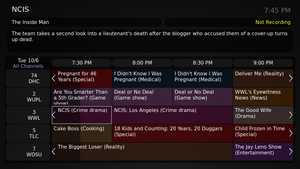Mythbuntu
Mythbuntu
Discontinued media center OS
Mythbuntu is a discontinued media center operating system based on Ubuntu, which integrated the MythTV media center software as its main function, and did not install with all of the programs included with Ubuntu.
This article has multiple issues. Please help improve it or discuss these issues on the talk page. (Learn how and when to remove these template messages)
|
Following the principles of fellow Linux distributions LinHES and MythDora, Mythbuntu was designed to simplify the installation of MythTV on a home theater PC. After Mythbuntu had been installed the MythTV setup program begins in which it can be configured as a frontend (a media viewer), backend (a media server), or combination of the two.[citation needed]
Mythbuntu aimed to keep close ties with Ubuntu thus allowing changes to be moved upstream for the greater benefit of the Ubuntu Community.[1] Due to the close link with Ubuntu, easy conversions between desktop and standalone Mythbuntu installations are possible. The development cycle of Mythbuntu originally followed that of Ubuntu, with releases occurring every six months. Starting with 12.04, Mythbuntu releases tracked Ubuntu's LTS (long-term support) releases, which release approximately every two years.[2]
On 4 November 2016 the development team announced the end of Mythbuntu as a separate distribution, citing insufficient developers. The team will continue to maintain the Mythbuntu software repository; the announcement advised new users to install another Ubuntu distribution, then install MythTV from the repository.[3]

